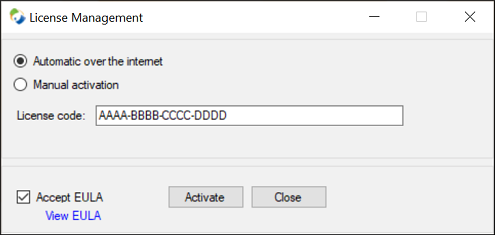Azure Marketplace Images for Windows Quick Start Guide
Introduction
This quick start guide describes how to configure DH2i’s bring-your-own-license (BYOL) and pay-as-you-go DxEnterprise Windows images available on Azure. Using this guide, you will configure DxEnterprise on two servers (nodes) and join the second node into a cluster.
Prerequisites
-
An Azure Virtual Machine (VM) with DxEnterprise pre-installed. To create a DxEnterprise VM using a Marketplace Image, visit the Azure Marketplace and search for DxEnterprise.
-
A second DxEnterprise VM for joining two nodes into a cluster.
Configure Server
-
Ensure the VM is up-to-date using Windows Update or sconfig.
-
Ensure the server hostname is set and unique.
-
Run the DxEnterprise Setup shortcut on the desktop to start DxEnterprise services.
Configure DxEnterprise Using DxConfiguration Manager
DxConfiguration Manager is a client tool used to configure first-time DxEnterprise installations on Windows. After the configuration is completed, administrators can use DxEnterprise’s management UI, DxAdmin, for cluster management. See the DxConfiguration Manager Admin Guide for more information.
Only complete step 2 if you have your own license (BYOL). Pay-as-you-go users do not need to manually activate and may skip step 2.
-
Start DxConfiguration Manager by double-clicking the desktop shortcut.
-
BYOL users only: At the main screen, select Activate License.

-
In the License Management window, enter the DxEnterprise license key (including dashes) in the license code box, check the Accept EULA box, and select Activate.
-
After the server successfully activates, close the License Management window to return to the main menu.
-
-
Prepare the node so other members can join the cluster.
- NAT Join
- Local Join
DxEnterprise can utilize the NAT Matchmaking Service to easily connect servers across the internet.
cautionBring-your-own-license (BYOL) users should verify that their license supports NAT and tunneling features before setting a One-Time PassKey. Visit the Client Portal to view license status. Alternatively, you can run the command
dxcli get-producttypeand verify that NAT and TUN are listed. To enable availability group management and/or tunneling features, please contact your DH2i account representative.Pay-as-you-go licenses on Azure and AWS already have NAT and tunneling enabled.
-
Click Manage OTPK to set a One-Time PassKey for the cluster that can be used by other nodes to join the cluster via NAT.

-
Select New, and a window will appear for setting the expiration time of the OTPK.

-
Choose a time and date for expiration (or leave the default), the select Set to generate the OTPK and close the window.
-
Save the OTPK for later so it can be used to join the second node to the cluster.
-
OPTIONAL: At the main menu, select Set Passkey to open the Passkey Management window.
infoSetting a cluster passkey is not required for NAT joins. However, a cluster passkey is required for remote cluster management.

-
Enter a passkey for the cluster and select Submit.
-
After the passkey is successfully set, select OK to return to the main menu.
-
-
Select Set Passkey to open the Passkey Management window.

-
Enter a passkey for the cluster and select Submit.
-
After the passkey is successfully set, select OK to return to the main menu.
-
Setup Second Node and Join to Cluster
-
Complete all the steps in the Configure Server section for the second node.
-
Start DxConfiguration Manager by double-clicking the desktop shortcut.
-
BYOL users only: Activate the server using the instructions from step 2 of the previous section.
-
At the DxConfiguration Manager main menu, select Join Membership.

- NAT Join
- Local Join
-
Select the Join via NAT Match Agent checkbox.
-
Leave the Target Member field with the default value of match.dh2i.com.
-
In the Pass Key field, paste (or type) the OTPK.
-
Select OK to join the cluster via NAT.
-
In the Target Member field, enter the IP address or hostname of the fist node.
-
In the Pass Key field, enter the cluster passkey.
-
Select OK to join the second node to the cluster.
-
Close the DxConfiguration Manager window.